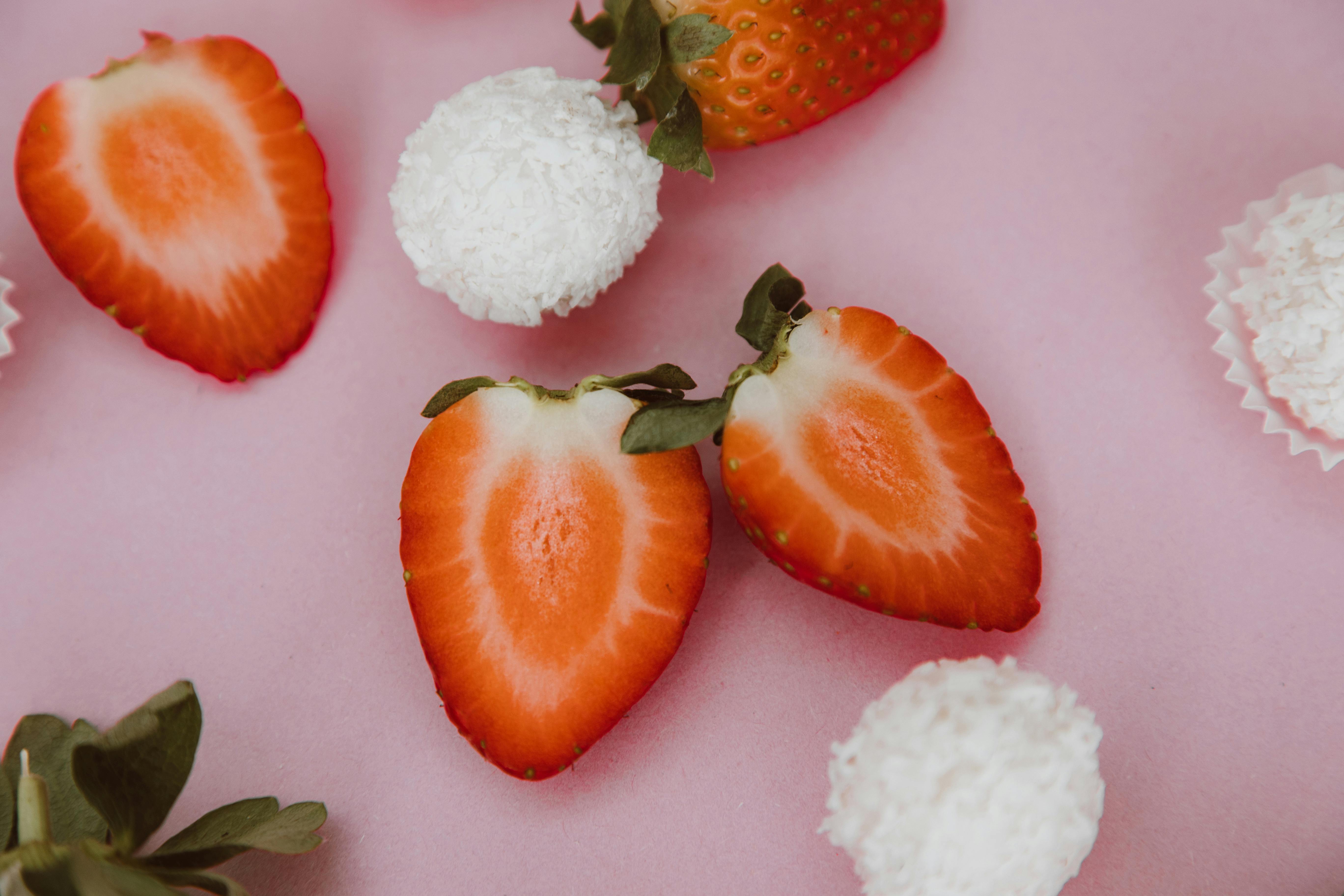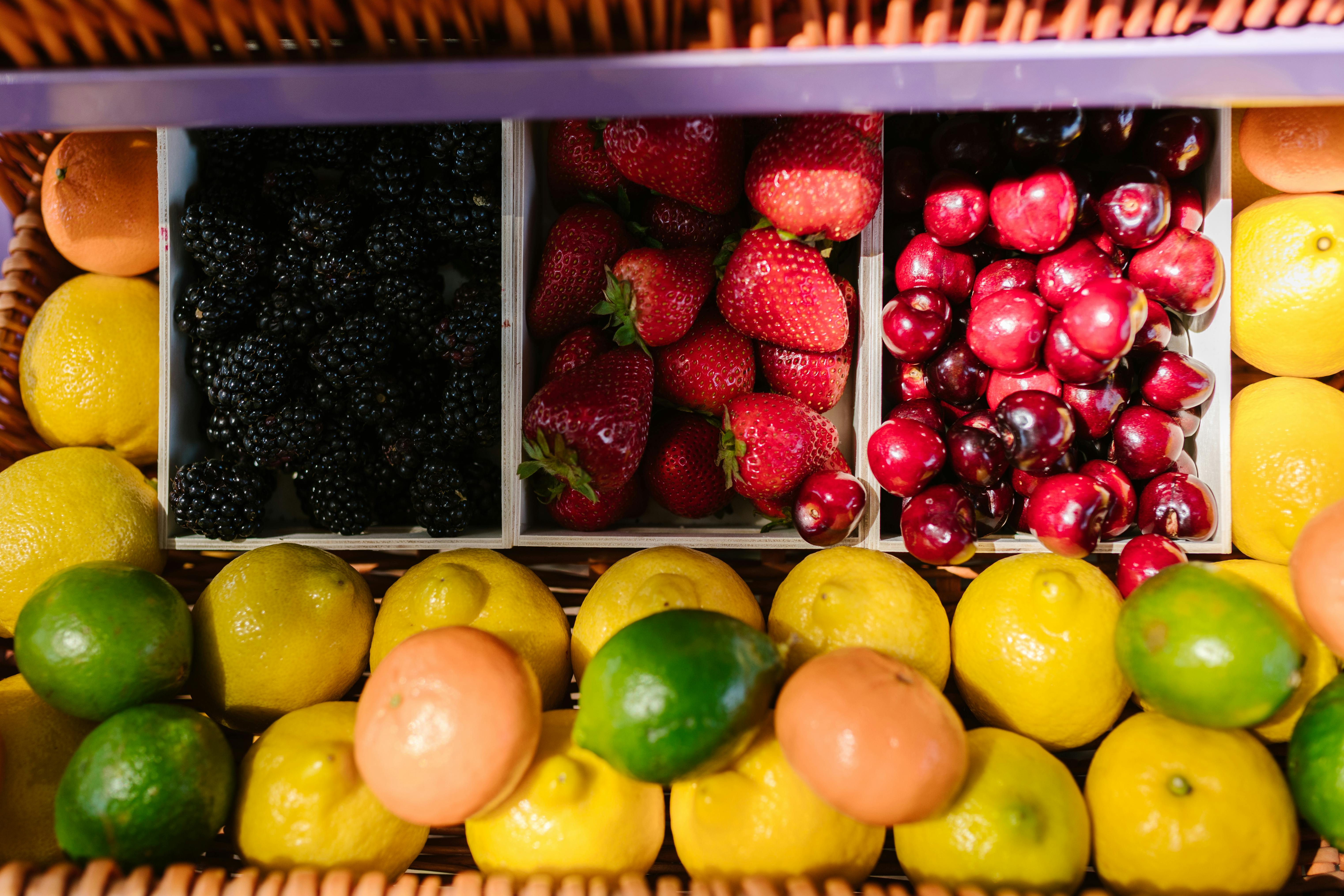Weeds can be a major problem in strawberry patches, as they can compete for nutrients and water in the soil. It’s important to take steps to reduce the presence of weeds in your strawberry patch, as they can severely reduce the size and quality of your crop. Here are some tips on how to keep weeds out of strawberries.To prevent weeds from growing around strawberries, ensure that the soil is well cultivated and cleared of weeds prior to planting. Once planted, keep the area around the strawberry plants weed-free by using a hoe or hand weeding. Mulching with organic materials such as straw, bark chips or grass clippings can also help reduce the number of weeds that sprout near the strawberry plants. Additionally, spraying an herbicide containing glyphosate can be effective at controlling weeds in and around strawberry plants.
Lay Cardboard
One of the easiest ways to create a barrier to block weeds from reaching strawberries is to lay cardboard. This helps keep the weeds from reaching the soil and prevents them from getting too close to the strawberries. It is important to make sure that the cardboard is laid out in an even layer so that it can provide effective protection from any weeds. To ensure that the cardboard remains in place, it can be weighed down with stones or other heavy objects.
Install a Barrier
Another way to create a barrier is to install a physical barrier around the strawberry plants. This could be done with chicken wire or landscape fabric, which can be laid out around the strawberries and held in place with stakes or pins. This will help keep any weeds that may try to reach through the ground away from the berries. It is important to check regularly for any gaps in the barrier and make sure they are filled in as soon as possible.
Mulch
Using mulch around strawberry plants can also help prevent weeds from growing near them. Mulch helps keep moisture in the soil and also prevents sunlight from reaching any weed seeds that may have been deposited nearby. It should be applied thickly enough so that it covers any exposed soil around the berries, but not so thickly that it suffocates them.
Cover With Plastic
Another option for creating a barrier between strawberry plants and weeds is to cover them with plastic sheeting or tarpaulin. This will help stop light from reaching weed seeds on or near the surface of the soil, preventing them from germinating and growing nearby. The plastic should be secured firmly at all edges so that it does not blow away, but it should also allow some air flow so as not to suffocate any of the strawberry plants.
Tips To Discourage Weeds From Invading Strawberry Beds
Weeds can be a nuisance in any garden, but they can be particularly vexing in a strawberry bed. Not only do weeds steal nutrients from the soil that your strawberries need to stay healthy, but they also block sunlight and reduce air circulation, which can lead to fungal diseases in your strawberry plants. To discourage weeds from invading your strawberry beds, here are some tips:
Mulch: A layer of straw or other organic mulch over the soil in your strawberry bed will help reduce weed growth. Mulch also helps keep moisture consistent, which is important for healthy strawberry plants.
Weed Regularly: Be sure to monitor and weed your strawberry bed regularly. Pulling or hoeing weeds when they are small will help prevent them from taking hold in the garden and competing with your strawberries for water and nutrients.
Cultivate Carefully: Make sure you cultivate carefully around the plants so as not to disturb their roots. This will help minimize weed growth while also helping ensure that the strawberries have enough space to spread out.
Cover Crops: Planting cover crops between rows of strawberries can help minimize weed growth and add beneficial organic matter to the soil. Examples of cover crops include clover, rye grass, buckwheat, and vetch.
Herbicides: If you do find yourself with an infestation of weeds that is difficult to manage with manual weeding methods, herbicides may be used as a last resort. Be sure to follow all instructions on the label carefully when applying herbicides near food-producing plants such as strawberries.
Planting Strawberries in Raised Beds
One of the best strategies for keeping weeds away from strawberry plants is to plant them in raised beds. Raised beds provide a barrier between the strawberry plants and the soil, which helps prevent weeds from taking hold. Additionally, raised beds can be filled with compost or other organic materials that are rich in nutrients and beneficial to strawberry plants. Planting strawberries in raised beds also improves drainage and aeration, which are essential for healthy plant growth.
Mulching
Another effective strategy for keeping weeds away from strawberry plants is to use mulch. Applying mulch around the base of the plants helps to reduce weed growth by blocking light and preventing weed seeds from germinating. Additionally, mulch acts as a protective barrier that retains moisture around the roots of the plants and prevents soil erosion. Organic mulches such as straw, shredded bark, or grass clippings are especially beneficial as they break down over time and add organic matter to the soil.
Hand Weeding
When it comes to keeping weeds away from strawberry plants, hand weeding is often necessary. Hand weeding involves manually removing weeds by pulling them up with your hands or a hand-held tool such as a hoe or trowel. Be sure to remove all of the root systems so that the weeds do not regrow in the future. When hand-weeding, be careful not to disturb surrounding plants or damage their roots.
Crop Rotation
Crop rotation is another effective strategy for keeping weeds away from strawberry plants. Crop rotation involves planting different crops in different parts of a garden each year so that certain types of pests or diseases do not build up in an area over time. By rotating crops on a regular basis, you can help reduce weed pressure and create a healthier environment for your strawberry plants.
Cover Crops
Cover crops are another way to keep weeds away from strawberry plants. Cover crops are planted between rows of strawberries and act like living mulches that prevent weeds from growing while providing additional organic matter to improve soil fertility. Common cover crops include clover, rye grass, buckwheat, oats, vetch, and alfalfa.
The Benefits of Mulching Around Strawberry Plants
Mulching is an important part of caring for strawberry plants. It helps to protect against temperature fluctuations, conserve moisture, and prevent weeds from growing around the plants. There are numerous benefits to mulching around strawberry plants.
One of the most important benefits of mulching is that it helps to keep soil temperatures consistent and prevent large temperature swings. This can be especially important during extreme weather conditions such as extended heat waves or cold snaps. The mulch acts as a buffer between the soil and air temperatures, helping to keep the soil at a more consistent temperature throughout the day.
Mulching also helps to preserve soil moisture, reducing the need for frequent watering. The mulch protects the soil from direct sunlight and prevents water from evaporating quickly. This conserves water, allowing it to be used more effectively and leading to healthier plants with higher yields.
Finally, mulch is effective at preventing weed growth around strawberry plants. This helps reduce competition for resources between weeds and strawberries and can lead to healthier plant growth overall. Additionally, using mulch can significantly reduce weeding time since weeds will be much easier to spot than if they were growing in an unmulched area.
In summary, the benefits of mulching around strawberry plants are numerous. It helps regulate soil temperatures, conserve moisture in the soil, and prevent weed growth around the plants. All of these factors contribute to healthier plant growth with higher yields of strawberries in return.

Different Types of Mulch and How They Help Keep Weeds Away
Mulch is a useful material to use when landscaping your yard or garden. Not only does mulch help to retain moisture and prevent weeds, but it also adds a decorative touch to your garden. There are many types of mulch available, each with its own advantages and disadvantages. Knowing the different types of mulches, and how they help keep weeds away, will help you decide which type is best for your needs.
One of the most popular types of mulch is organic mulches such as shredded bark, pine needles, straw, wood chips, or compost. These types of mulches are great for keeping moisture in the soil and suppressing weed growth. Organic mulches also provide nutrients to the soil as they break down over time. The downside is that these types of mulches need to be replenished more often than other types of mulches.
Inorganic mulches are also available in a variety of materials such as rocks, rubber, plastic sheets, or even gravel. These materials are not biodegradable but they do last longer than organic materials. Inorganic mulches provide excellent protection against weed growth and can help with water retention in the soil. The downside is that these materials can become very hot in direct sunlight and may not look as natural as organic materials.
Another type of mulch is landscape fabric which acts like a barrier between the soil and weeds by blocking light from reaching the weed seeds below it. Landscape fabric works well for suppressing weed growth but it can be difficult to install correctly and may require more maintenance than other types of mulch due to its susceptibility to tearing or becoming clogged with debris over time.
When choosing a type of mulch for your landscape or garden area, consider what kind of protection you need from weeds as well as how long you want it to last before needing replacing. Organic material can provide nutrients to the soil while inorganic material may last longer but may not be as aesthetically pleasing. Ultimately, the decision will come down to personal preference and practicality depending on your specific needs!
Tips on Applying Mulch for Maximum Weed Suppression
Mulch is a great way to reduce weed growth in your garden and landscaping. It helps to prevent moisture loss, regulate soil temperatures, and add essential nutrients to the soil. Applying mulch correctly can help you get the most out of it in terms of weed suppression. Here are some tips for applying mulch correctly:
• Start with a clean surface: Before you apply mulch, make sure that the area is free of weeds and debris. This will help reduce the risk of introducing new weeds into your soil.
• Apply a 3-4 inch layer: To get maximum weed suppression, it’s best to apply a layer of mulch that’s 3-4 inches thick. This will help smother existing weeds and prevent new ones from growing.
• Don’t let it touch the base of plants: Make sure that the mulch is kept away from the base of plants. This will help reduce the chances of disease or rot developing at the base of your plants.
• Use organic mulches: Organic mulches like bark and wood chips are better able to suppress weeds than non-organic materials like plastic or rubber. They also provide essential nutrients to your soil as they break down over time.
• Refresh annually: To keep your garden looking its best, it’s important to refresh your mulch every year or two. This will ensure that it continues to provide adequate weed suppression as well as essential nutrients for your plants.
By following these tips on applying mulch correctly, you can ensure maximum weed suppression in your garden or landscaping project and get the most out of your mulching efforts!
Pulling Weeds Manually from Strawberry Beds
Weeds can be a major problem in strawberry beds and can reduce the yield of the crop by competing for valuable moisture and nutrients. It is important to keep the strawberry beds free from weeds by pulling them manually. Here are some tips for successfully pulling weeds from strawberry beds:
Use the Right Tools
The right tools can make a big difference when it comes to pulling weeds. A good garden fork or spade is essential for loosening the soil around the roots of weeds so that they can be pulled out with minimal effort. A hoe can also be useful for cutting through larger roots and tougher soils.
Know Your Weeds
It is important to know which weeds are growing in your strawberry bed so that you can target them specifically. Different types of weeds will require different methods of removal, so it’s important to know what you’re dealing with before you start pulling.
Timing is Everything
Timing is critical when it comes to weed removal. Try to pull weeds when they are young and actively growing, as this will make them easier to remove. If you wait too long, the roots may become too deeply entrenched in the soil and difficult to remove.
Be Thorough
When pulling weeds, it’s important to be thorough and make sure that all of the root systems have been removed or else they may grow back. Be sure to check all corners and edges of your strawberry bed for any stray weed roots that may have been missed.
Mulch and Fertilize
Once all the weeds have been removed, it’s a good idea to add a layer of mulch around your strawberry plants. This will help suppress any new weed growth and help retain moisture in the soil. Additionally, fertilizing your plants regularly will help ensure healthy growth throughout the season.
By following these tips, you should be able to keep your strawberry bed free from pesky weeds while ensuring healthy growth of your plants throughout the season.

Conclusion
Weeds are a common problem in strawberry patches and can quickly take over if left unchecked. The most effective way to keep them out is to use a combination of mulch, hand weeding, and natural weed killers like vinegar. Moreover, it is important to monitor the patch regularly to ensure that any new weeds are removed quickly.
Maintaining a healthy strawberry patch will require some effort and dedication, but it is worth it for the delicious fruit you can enjoy. With the right strategies and vigilance, you can have a weed-free strawberry patch in no time.
So, when it comes to keeping weeds out of strawberries, the most important things to remember are mulching, weeding by hand, using natural weed killers, and monitoring the area regularly. With this approach in mind, you can enjoy a thriving strawberry patch free from pesky weeds!



